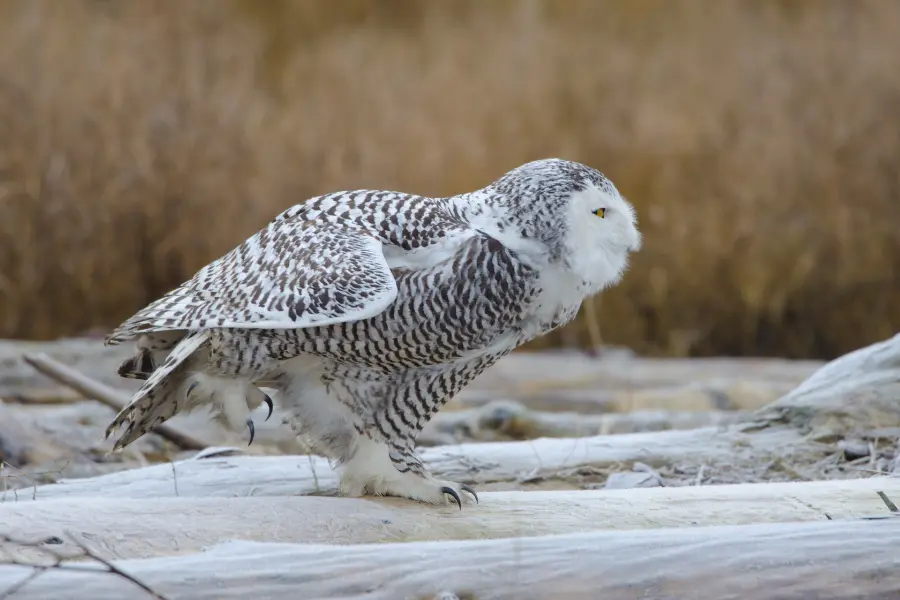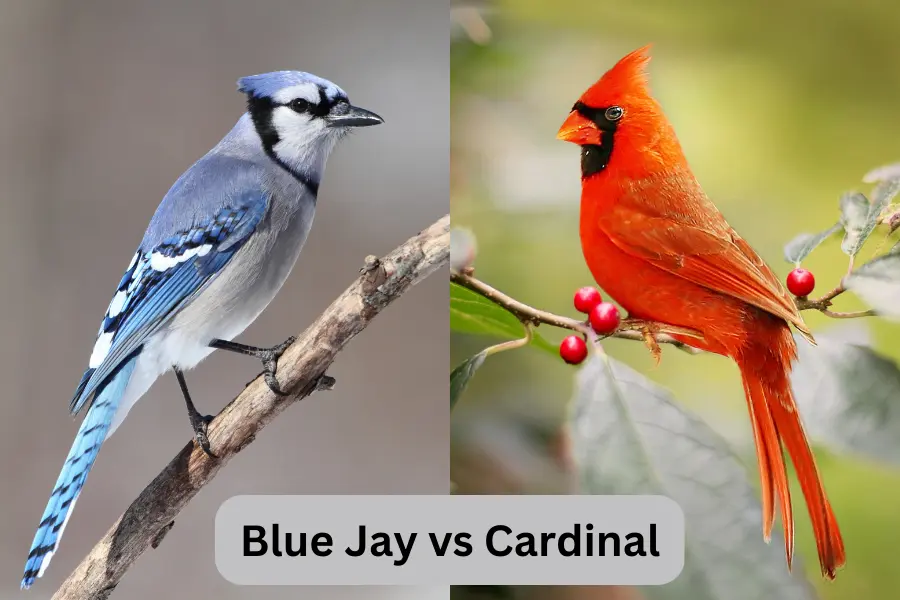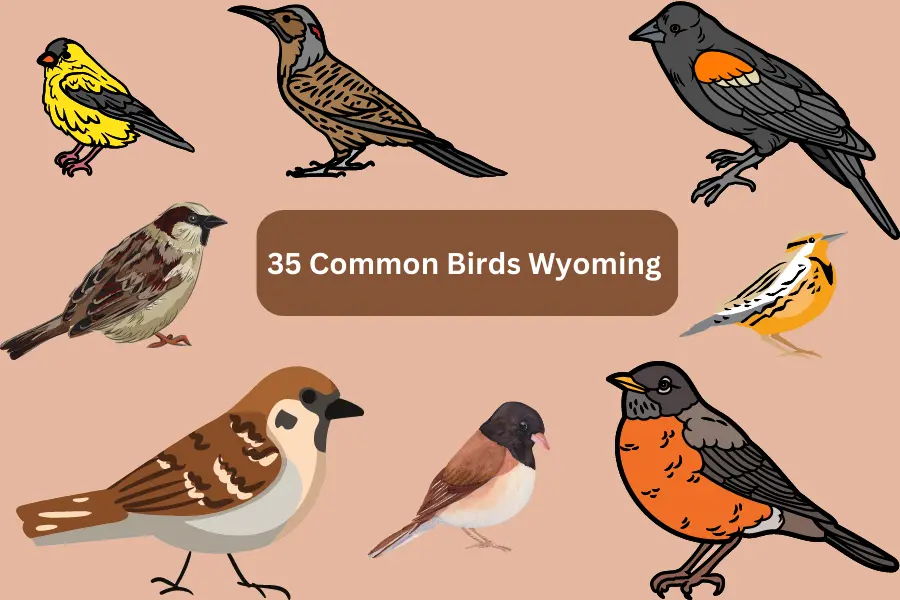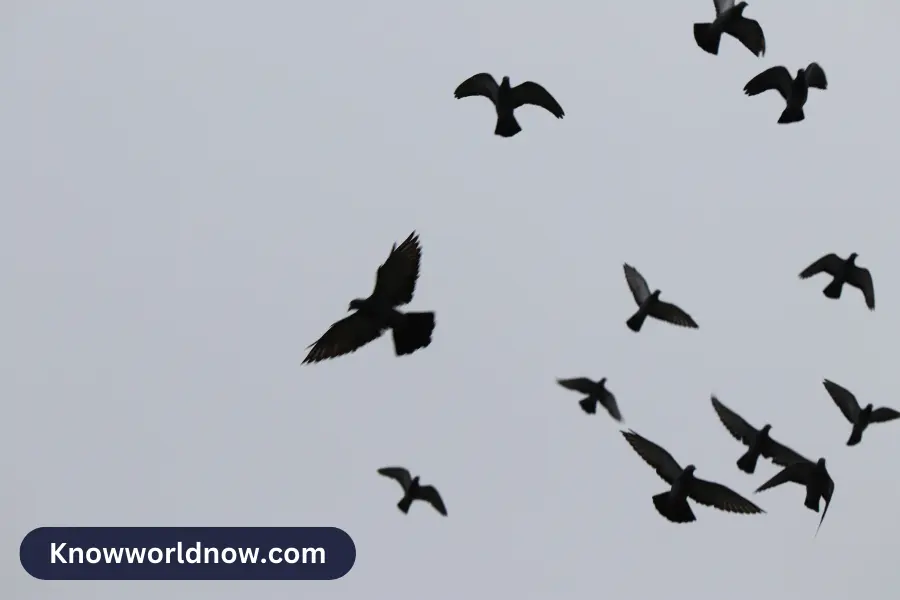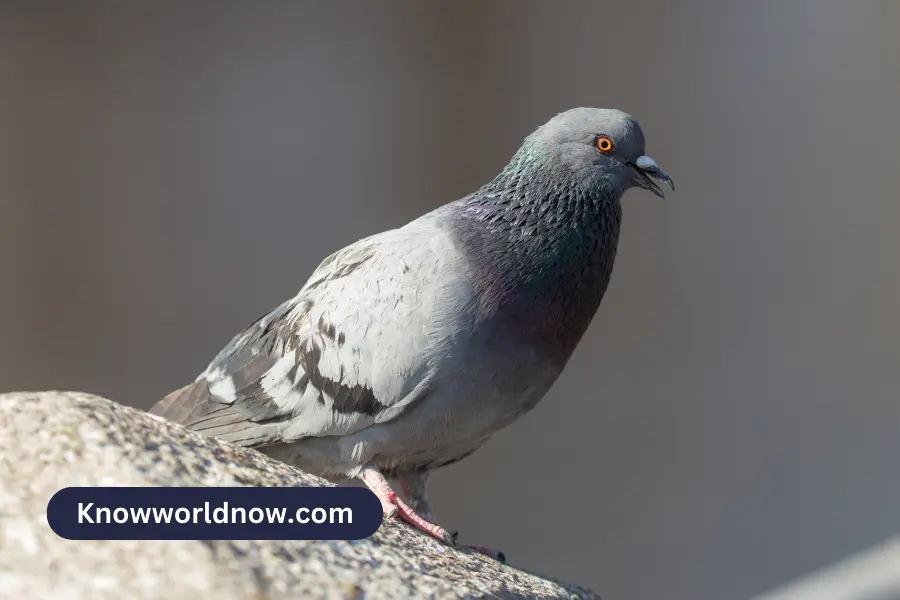For most people, the word “bird” creates a vision of a tiny little and cute creature. But we often forget that there are thousands of birds that are not so small. Some of them have long necks and long wings, which make them look even bigger.
You will find birds of different colors with long necks. However, white birds with long necks can be seen more commonly. You, like many others, may find it difficult to distinguish them. But all these birds have different features that make them unique.
So, in this article, we will feature 30 white long-neck birds, and hopefully, you will find it easy to identify between different birds.
White Birds with Long Necks
It is yet not possible to say how many white long-neck birds there are in the world. Researchers and zoologists have identified a good number of them already. Here are 30 common white birds with long necks:
1. Great White Egret
| Characteristic | Information |
| Scientific name | Ardea alba |
| Height | 36-42 inches |
| Weight | 2.6-4.5 pounds |
| Wingspan | 5.5-6.5 feet |
| Tail size | 6-7 inches |
| Diet | Fish, reptiles, amphibians, and small mammals |
| Found in | Eurasia, Africa, the Americas, and Australia |
If you think birds are small and so vulnerable, then you should see some Great White Egrets. These birds are 36 to 42 inches in height, more than half of yours. Their necks are very long. 1.5 times longer than their body. They usually keep their neck curved in an “S” shape.
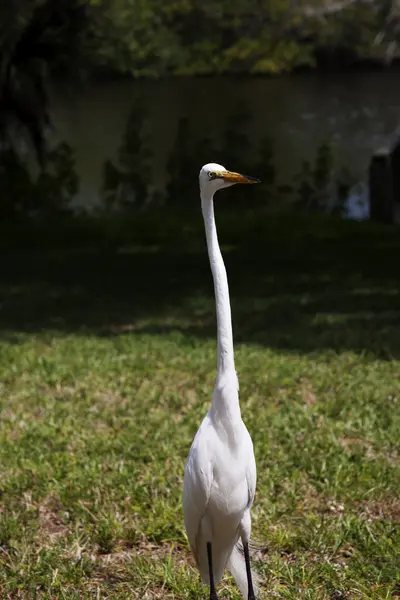
A full-grown white Egret can weigh up to 4.5 lb. These white long-neck birds can be seen in different places of the world, including Africa, America, Australia, Asia, and some parts of Europe.
These birds are highly migratory and travel long distances between their breeding and wintering grounds. They can also fly about 25-30 miles per hour.
Great Egrets like to eat fish, reptiles, amphibians, and small mammals. Despite being called great white, they are not always entirely white. Sometimes you will see them having yellow bills, black legs, and green lines.
2. Intermediate Egret
| Characteristic | Information |
| Scientific name | Ardea intermedia |
| Height | 29-34 inches |
| Weight | 1.8-2.8 pounds |
| Wingspan | 4.5-5 feet |
| Tail size | 6-7 inches |
| Diet | Fish, crustaceans, and insects |
| Found in | Southern and eastern Asia, Australia, and the Pacific islands |
Their name gives away their identity to some extent. They are shorter than Great Whites but bigger than some of the other members of the Egret family. On average, their height is 29-34 inches.
They have really big wings of about 5 ft but a comparatively smaller tail. Their necks are almost half of their height. They are also fond of fish, along with crustaceans and insects. You can find them in southern and eastern Asia, Australia, and the Pacific islands.
Like the great Egrets, intermediate Egrets are also migratory. They are even faster, with the ability to fly about 30-35 miles per hour.
3. Snowy Egret
| Characteristic | Information |
| Scientific name | Egretta thula |
| Height | 22-26 inches |
| Weight | 0.7-1.3 pounds |
| Wingspan | 3-4 feet |
| Tail size | 4-5 inches |
| Diet | Fish, crustaceans, shrimp, worms, and insects |
| Found in | North, Central, and South America |
Snowy Egrets are small wading birds with white plumage, black legs, and distinctive yellow feet. You can find them in wetlands, marshes, and shallow water habitats across North, Central, and South America.
Their height varies from approximately 22 to 26 inches. Snowy Egrets have a unique feeding behavior called “foot-stirring,” where they shuffle their feet in the water to scare up prey. Though they, too, have 3-4 ft. long wingspan, they are slower than great or intermediate Egrets. They can fly about 25-30 miles per hour.
They are very social, and you can see them breeding in mixed colonies together with great egrets, cattle egrets, glossy ibises, and other birds.
4. Cattle Egret
| Characteristic | Information |
| Scientific name | Bubulcus ibis |
| Height | 17-22 inches |
| Weight | 0.7-1.3 pounds |
| Wingspan | 3-4 feet |
| Tail size | 4-5 inches |
| Diet | Insects, small reptiles, and mammals |
| Found in | Originally from Africa, but has since spread to other parts of the world, including Asia, Europe, and the Americas |
Cattle Egrets are smaller than most of the other Egrets as they are around 17 to 22 inches tall and weigh at most 1.3lb on average. They live on insects, small reptiles, and mammals. You will find them in different countries across the globe.
These smaller Egrets are very fast, and they can fly up to 35 miles per hour. Because of their high speed, they travel to distant places during the migratory season.
These birds are known for their unique relationship with grazing animals, as they often perch on the backs of cattle or other livestock to catch insects disturbed by their movements. You must have seen such photos on the internet going viral.
The word “cattle” in their name comes from their close association with domesticated cattle and other livestock.
5. Little Egret
| Characteristic | Information |
| Scientific name | Egretta garzetta |
| Height | 22-26 inches |
| Weight | 0.7-1.3 pounds |
| Wingspan | 3-4 feet |
| Tail size | 4-5 inches |
| Diet | Fish, insects, and small animals |
| Found in | Europe, Asia, Africa, and Australia |
From the name, you can guess that they are small in size. However, they are not as small as cattle Egrets. Adult little Egrets are 22 to 26 inches. Their diet consists of fish, insects, and small animals.
Little Egrets are known for their unique feeding manner. They show distinctive “shaky dance” feeding behavior. It refers to stirring up mud or shallow water to scare up prey. During the breeding season, Little Egrets grow long plumes on their back, chest, and head, which they use to attract mates.
Like other Egrets, Little Egrets are also migratory. They can fly up to 22 miles per hour and are capable of sustained flight for hours at a time and can travel over 200 miles in a day.
6. Western Reef Egret
| Characteristic | Information |
| Scientific name | Egretta gularis |
| Height | 22-26 inches |
| Weight | 0.8-1.4 pounds |
| Wingspan | 4-5 feet |
| Tail size | 4-5 inches |
| Diet | Fish, crustaceans, and insects |
| Found in | Coastal regions of the eastern Atlantic and western Indian Oceans, ranging from Mauritania to South Africa and from the Red Sea to India |
Western Reef Egrets are medium-sized birds. You can have a good recreational time watching them engage in elaborate courtship displays, including aerial acrobatics and gift-giving. They usually live in coastal areas, including coral reefs, rocky shores, and sandy beaches, across the Indian Ocean and Red Sea regions.
They weigh between 0.8 and 1.4 pounds and range in height from 22 to 26 inches. A five-inch tail is all that they have. They eat fish, crabs, and insects.
As these birds can fly 30 miles per hour, they will travel long distances during the winter and migrate to other countries for warmer weather. They are highly social species and form large flocks during non-breeding periods.
7. Chinese Egret
| Characteristic | Information |
| Scientific name | Egretta eulophotes |
| Height | 22-28 inches |
| Weight | 0.9-1.3 pounds |
| Wingspan | 4.5-5 feet |
| Tail size | 4-5 inches |
| Diet | Fish, small crustaceans, and insects |
| Found in | Eastern Asia, breeding in China and wintering in Southeast Asia |
Chinese Egrets are of medium size and are about 25 inches in length on average. They have a small wingspan of about 5 feet. They have white plumage, long yellow bills, and yellow feet.
They develop plumes of long, white feathers on their backs, chests, and nape to attract their mates during the breeding season. Land reclamation, coastal development, and pollution are threatening their breeding habitat.
Chinese Egrets are migratory birds, and they breed in the Yellow Sea region and the Yangtze River basin of China and winter in Southeast Asia and Australia. They can cover long distances by flying at a speed of 20 miles per hour.
They have cultural values in Chinese culture. Several conservation measures have been put in place to protect Chinese Egrets, such as the establishment of nature reserves, habitat restoration, and public education campaigns to raise awareness of the importance of conserving these birds and their habitats.
8. Yellow-billed Stork
| Characteristic | Information |
| Scientific name | Mycteria ibis |
| Height | 35-40 inches |
| Weight | 4-5 pounds |
| Wingspan | 6-7 feet |
| Tail size | 6-7 inches |
| Diet | Fish, frogs, insects, and small reptiles |
| Found in | Sub-Saharan Africa, ranging from Senegal to Ethiopia and south to South Africa |
The Yellow-billed Stork is a large wading bird found in wetlands throughout sub-Saharan Africa. They have distinctive yellow bills and legs, and their plumage ranges from white to pinkish-gray. The 35-40 inches tall birds are the largest of the African storks and weigh around 4-5 pounds.

These Storks are usually very friendly. During the breeding season, these storks build large stick nests in trees or on cliffs, often in colonies with other water birds. Besides, they seem to have a mutual understanding of hippos. They feed on fish and other prey disturbed by the hippos as they graze.
Yellow-billed Storks can fly at speeds of up to 30 miles per hour which helps them travel long distances during the migration or in search of food.
9. Whooping Crane
| Characteristic | Information |
| Scientific name | Grus americana |
| Height | 52-60 inches |
| Weight | 12-17 pounds |
| Wingspan | 7-8 feet |
| Tail size | 8-9 inches |
| Diet | Insects, small animals, and plants |
| Found in | North America, breeding in Canada and the United States and wintering in the United States and Mexico |
The Whooping Crane is one of the tallest birds in North America and stands up to 5 feet tall. Their striking white plumage and red crown make them unique and special.
Whooping Cranes are omnivorous. Their diet contains a variety of foods, including crustaceans, insects, frogs, snakes, and berries. To attract mates, they often perform elaborate courtship dances during the breeding season.
They play an important role in the ecosystem, maintaining wetland habitats and supporting a wide variety of other plant and animal species. However, they are highly endangered and have been the focus of intensive conservation efforts to save them from extinction.
The population of wild Whooping Cranes dropped to only 15 birds in the 1940s, but thanks to conservation efforts, there are now over 800 birds in the wild and in captivity. They can fly up to 30 miles.
10. Red-crowned Crane
| Characteristic | Information |
| Scientific name | Grus japonensis |
| Height | 50-64 inches |
| Weight | 8-20 pounds |
| Wingspan | 7-8 feet |
| Tail size | 8-9 inches |
| Diet | Plants, insects, and small animals |
| Found in | Northeast Asia, breeding in Russia, China, and North Korea and wintering in Japan and China |
Red-crowned Cranes are another highly endangered species that is native to Asia. These are one of the world’s rarest cranes. Their bright red crown, white plumage, and black-tipped wings make them strikingly beautiful.
These cranes are highly territorial and will defend their nesting sites aggressively against intruders. They do not like to share their space with other birds. They live up to 15 years. In Japan, they are the symbol of longevity.
Red-crowned Cranes are devoted to their mates. When they find a mate, they mate for life and never look for another partner.
It is good news that the number of Red-crowned cranes has been increasing in recent years. Hopefully, the number will go higher, and we will be able to watch this beautiful creature of nature more.
11. Siberian Crane
| Characteristic | Information |
| Scientific name | Leucogeranus leucogeranus |
| Height | 47-55 inches |
| Weight | 10-18 pounds |
| Wingspan | 7-8 feet |
| Tail size | 9-10 inches |
| Diet | Plants, insects, and small animals |
| Found in | Northern Asia, breeding in Russia and wintering in China and Iran |
Siberian Cranes are quite large birds with a height of 47 to 55 inches. They have a weight of 10 to 18 pounds. Quite a big size! They are native to northern Asia and Russia and migrants to China and Iran. They have a really long neck, often 1 meter long.
They have a distinctive red patch of skin on their forehead, which makes them unique. Their diet consists of plants, insects, and small animals. Despite their big size, they are pretty fast. On average, a Siberian Crane can fly about 31 to 50 miles per hour.
Sadly, however, this species is also under great threat. Human activities such as habitat loss, hunting, and pollution have contributed to the decline in the Siberian Crane population. It’s high time we became careful of the environment.
12. Dalmatian Pelican
| Characteristic | Information |
| Scientific name | Pelecanus crispus |
| Height | 60-72 inches |
| Weight | 20-33 pounds |
| Wingspan | 9-12 feet |
| Tail size | 14-16 inches |
| Diet | Fish, including carp, eel, and catfish |
| Found in | Eastern Europe, Russia, and parts of Asia |
Being 60-72 inches tall, the Dalmatian Pelican is the largest freshwater bird. Their wingspan is 9 to 12 feet long. An adult Dalmatian weighs up to 33 pounds! They are commonly seen in Eastern Europe, Russia, and parts of Asia.
They have distinctive white and silver-gray plumage, with black feathers on their wings and tail. They are social birds and typically form breeding colonies during the breeding season. Their breeding season occurs between April and June. These big birds need 2.6 pounds of fish daily on average.
Unfortunately, like most birds, their existence is also a threat because of human activities. Currently, there are no more than 20,000 Dalmatians.
13. American White Pelican
| Characteristic | Information |
| Scientific name | Pelecanus erythrorhynchos |
| Height | 50-64 inches |
| Weight | 9-31 pounds |
| Wingspan | 8-10 feet |
| Tail size | 10-12 inches |
| Diet | Fish, including carp, minnows, and perch |
| Found in | Wetlands and other shallow water habitats in North America, breeding in Canada and the western United States and wintering in parts of the United States and Mexico |
American White Pelicans are large white birds with long necks. Their size varies from 50 to 64 inches. And they weigh from nine to thirty-one pounds. They are more common in North America.
They have a wingspan of up to 9 feet and can fly at speeds of around 20-30 miles per hour, thanks to their eight to ten feet wingspans. American Pelicans are highly migratory and can travel up to 1,500 miles in a single journey.
Their distinctive feature is a large, pouched bill that they use to catch fish. They can also hold up to 3 gallons of water in their bill, which they then strain for fish.
These birds are highly social and form colonies to live together. But to lay eggs, they go to isolated islands. Both parents incubate the eggs and care for the young. Because of the change in climate, these birds are in danger.
14. Australian Pelican
| Characteristic | Information |
| Scientific name | Pelecanus conspicillatus |
| Height | 50-64 inches |
| Weight | 9-19 pounds |
| Wingspan | 8-10 feet |
| Tail size | 10-12 inches |
| Diet | Fish, crustaceans, and other aquatic prey |
| Found in | Australia, Papua New Guinea, and parts of Indonesia |
Australian Pelican is one of the largest Pelican species, with almost 10 feet of wingspan and around 60 inches in height. An adult Australian Pelican can be about 19 pounds.
These Pelicans have the longest beak among all bird species, which can be 20 inches long. Their neck is very thick, and they can keep them folded while flying. They use their beak and beak pouches which serve like a net.
These birds can hold almost 3.5 gallons of water. These white birds with long necks are very social, and their colony can have 40,000 members on an island.
They have a lifespan of 25 years, and they live on fish, crustaceans, and other aquatic prey. With their long wings, they can fly at a speed of 25 miles per hour at altitudes of up to 10,000 feet, making them one of the highest-flying bird species in the world.
15. Great White Pelican
| Characteristic | Information |
| Scientific name | Pelecanus onocrotalus |
| Height | 55-70 inches |
| Weight | 22-33 pounds |
| Wingspan | 9-12 feet |
| Tail size | 12-14 inches |
| Diet | Fish, including catfish, carp, and tilapia |
| Found in | Africa, southern Europe, and western Asia |
The Great White Pelican is almost as big as the Dalmatian Pelican, with a height range of 55 to 70 inches. They are available in Africa, southern Europe, and Western Asia. They have 11 feet-long wingspan, which helps them fly 25 miles per hour at different altitudes.
These enormous birds are also known as rosy Pelicans and eastern Pelicans and weigh up to 33 pounds. They have dull pale yellow gular pouches, and their large pink and yellow beaks measure up to 18.5 inches long.
These white birds with long necks have an interesting breeding behavior. They breed in large colonies where hundreds or even thousands of pairs nest together. During the breeding season, the male Pelican will select a nesting site and begin to build a simple nest out of sticks, grass, and other materials. During this time, the male Pelican develops a distinctive knob on his bill.
They have a long lifespan, with some individuals living up to 25 years in the wild. These white birds with long necks are an important cultural symbol in parts of Africa and are often depicted in traditional art and folklore.
People also love to read:
16. Royal Spoonbill
| Characteristic | Information |
| Scientific name | Platalea regia |
| Height | 31-34 inches |
| Weight | 2.6-3.5 pounds |
| Wingspan | 55-65 inches |
| Tail size | 4-5 inches |
| Diet | Fish, crustaceans, and other aquatic prey |
| Found in | Australia, New Zealand, and nearby islands |
Royal Spoonbills have quite large wingspans compared to their length. Their height varies from 31 to 32 inches, but their wingspan can be up to 65 inches. Despite their large size, they are not heavy in weight. These white birds with long necks and black beaks weigh 3.5lb at most.
Because of their beak, they are often referred to as black-billed spoonbills. Their necks are moderately long, which they keep extended while flying at 30 miles per hour speed.
They have a unique feeding behavior, which involves sweeping their bill from side to side in shallow water to catch fish and other prey.
17. American White Ibis
| Characteristic | Information |
| Scientific name | Eudocimus albus |
| Height | 23-27 inches |
| Weight | 1.5-2 pounds |
| Wingspan | 36-41 inches |
| Tail size | 3-4 inches |
| Diet | Crustaceans, fish, and insects |
| Found in | Wetlands and other shallow water habitats in the southeastern United States, the Caribbean, and parts of Central and South America |
These white birds with long necks are a beautiful creation of nature. Their white plumage with black wing tips, long legs, and pink facial skins dazzles visitors.
They are social birds, and you will see them mostly in groups both during breeding times and other times as well. The female American White Ibis lays 2-5 eggs in a nest made of sticks and grasses. The chicks are born with naked, pink bodies and are fed regurgitated food by their parents.
White Ibises are able to fly at a cruising speed of around 30 miles per hour. They are associated with the Maya civilization and so hold an important cultural symbol in parts of Central and South America.
18. Tundra Swan
| Characteristic | Information |
| Scientific name | Cygnus columbianus |
| Height | 44-56 inches |
| Weight | 10-23 pounds |
| Wingspan | 5-6 feet |
| Tail size | 6-7 inches |
| Diet | Aquatic plants, grasses, and grains |
| Found in | Arctic and subarctic regions of North America and Eurasia, with wintering populations in parts of the United States and Asia |
Tundra Swans are a large waterfowl species found in northern parts of North America and Eurasia. Their white plumage, black bill, and distinctive black face separate them from other swans.
These migratory birds travel long distances during the fall and spring. They usually fly 40-5o miles per hour, but during the migration, they can fly up to 80 miles per hour. Yes, they fly faster than you are allowed to drive your car!
They cover up to 4000 miles from their breeding sites while migrating. They fly at altitudes of up to 20,000 feet. Tundra Swans are herbivores and primarily feed on aquatic plants, grasses, and other vegetation.
19. Mute Swan
| Characteristic | Information |
| Scientific name | Cygnus olor |
| Height | 49-67 inches |
| Weight | 18-32 pounds |
| Wingspan | 6-8 feet |
| Tail size | 8-9 inches |
| Diet | Aquatic plants, grasses, and grains |
| Found in | Europe and Asia, with introduced populations in parts of North America and Australia |
Swans usually make a lot of noise, but Mute Swans are exceptional. They do make various types of sounds, including hisses, grunts, and snorts, but they do not have the loud, trumpet-like calls of other swan species. That is why they are called “mute.” However, they are not completely silent.
An adult Mute Swan can weigh 32 pounds, making them one of the heaviest birds in the world. Despite their large size, they can cover 40 miles per hour flying. They are also strong swimmers, and you may often spot them in lakes, ponds, and rivers.
During the breeding season, the male and female Mute Swans perform a courtship display that involves facing each other and raising their wings. The female Mute Swan lays 5-7 eggs in a large nest made of sticks, grasses, and other materials.
20. Whooper Swan
| Characteristic | Information |
| Scientific name | Cygnus cygnus |
| Height | 52-64 inches |
| Weight | 15-31 pounds |
| Wingspan | 7-8 feet |
| Tail size | 8-9 inches |
| Diet | Aquatic plants, grasses, and grains |
| Found in | Arctic and subarctic regions of Europe and Asia, with wintering populations in parts of Europe and eastern Asia |
Whooper Swans are a large species and are found in northern Europe and Asia. They are about 64 inches tall and weigh 31 pounds on average. Though having a large structure, they have a comparatively small wingspan of 7-8 feet.
With their white plumage, a black bill with a yellow base, and a long, straight neck, they are distinctively unique. These migratory birds can travel long distances during the fall and spring. They are opposite to Mute Swan as they are known for their loud, trumpeting calls, which can be heard from a distance.
During the breeding season, the male and female Whooper Swans perform a courtship display that involves calling and head-bobbing. They are vegan and feed on aquatic plants, grasses, and other vegetation.
21. Trumpeter Swan
| Characteristic | Information |
| Scientific name | Cygnus buccinator |
| Height | 45-58 inches |
| Weight | 16-30 pounds |
| Wingspan | 6-7 feet |
| Tail size | 7-8 inches |
| Diet | Aquatic plants, grasses, and grains |
| Found in | North America, breeding in Alaska and Canada and wintering in the western United States |
These large waterfowl are mostly seen in North America and Canada. During the winter season, they migrate to the western United States. They have white plumage, a black bill, and a long, straight neck.
They are named after the habit of making loud, trumpet-like calls, which can be heard from a distance. These white birds with long necks are powerful fliers that can fly 50 miles per hour. However, during migration, they fly at a speed of 30 miles per hour and cover long distances.
Like other loud swans, the male and female Trumpeter Swans perform a courtship display during the breeding season that involves calling and head-bobbing. Trumpeter Swans are primarily vegan and feed on aquatic plants, grasses, and other vegetation.
22. Masked Booby
| Characteristic | Information |
| Scientific name | Sula dactylatra |
| Height | 30-34 inches |
| Weight | 1.8-3.7 pounds |
| Wingspan | 60-70 inches |
| Tail size | 8-10 inches |
| Diet | Fish and squid |
| Found in | Tropical and subtropical oceans worldwide, nesting on islands and coastal cliffs |
Masked Booby is a large seabird species found in tropical and subtropical regions around the world. Their size varies from 30 to 32 inches. But they have a double wingspan of their size. Their diet includes fish and squid.
Their black and white plumage with a blue-gray bill makes them distinctive. These long-necked birds are popular for their spectacular aerial displays and diving abilities. Their acrobatics is a wonderful experience for travelers and visitors.
The male and female birds perform elaborate courtship displays during the breeding season. They will call head-Bobb, and sky-point to attract each other. The female Masked Booby lays a single egg in a nest made of twigs and other materials.
Masked Boobies are fast and agile fliers. You may notice them flying only at a speed of 25 miles per hour. But do not get fooled by that. These birds can fly up to 60 miles per hour while chasing prey.
23. Snow Goose
| Characteristic | Information |
| Scientific name | Chen caerulescens |
| Height | 25-33 inches |
| Weight | 3.7-7.7 pounds |
| Wingspan | 53-59 inches |
| Tail size | 3.5-4.5 inches |
| Diet | Grasses, sedges, and other plant material |
| Found in | Arctic and subarctic regions of North America, with wintering populations in the southern United States and Mexico |
Snow Geese are found in North America. They are known for their white plumage. You can divide them into two subspecies: the Lesser Snow Goose and the Greater Snow Goose.
These long-necked birds breed in the Arctic tundra and migrate to wintering grounds in the United States and Mexico. During migration, they form large flocks that can number in the tens of thousands. These white birds with long necks are vegan and feed on grasses, sedges, and other vegetation.
They have a distinctive honking call that can be heard from a distance. The male and female Snow Geese perform a courtship display that involves calling and head-bobbing during the breeding season.
Snow Geese are strong fliers and can travel long distances during migration, with some individuals covering over 3,000 miles in a single journey. Their ability to fly 50 miles per hour makes it easier for them to travel such a long distance.
24. White-faced Heron
| Characteristic | Information |
| Scientific name | Egretta novaehollandiae |
| Height | 28-34 inches |
| Weight | 1.5-2.6 pounds |
| Wingspan | 47-53 inches |
| Tail size | 4-5 inches |
| Diet | Fish, crustaceans, and insects |
| Found in | Wetlands, estuaries, and other shallow water habitats in Australia, New Zealand, and nearby islands |
The White-faced Heron is a medium-sized bird. They are mostly seen in Australia, New Zealand, and some Pacific islands. They have a distinctive blue-gray plumage with a white face and throat.
They are good at hunting. They prey and eat fish, fog, and other insects. White-faced Herons are solitary birds and are usually seen alone or in small groups.
The male and female birds perform elaborate courtship displays during the breeding season. Their display involves calling, head-bobbing, and wing-flapping. The female bird can lay 2-4 eggs.
White-faced Herons are strong fliers and can travel long distances during migration at a speed of 25 miles per hour. They can fly for long times and pass over 1000 miles a day.
25. White-necked Heron
| Characteristic | Information |
| Scientific name | Ardea pacifica |
| Height | 31-39 inches |
| Weight | 2.6-4.9 pounds |
| Wingspan | 59-67 inches |
| Tail size | 6-7 inches |
| Diet | Fish, amphibians, crustaceans, and insects |
| Found in | Wetlands, marshes, |
These large white birds with long necks are found in Australia, New Guinea, and Indonesia. They live around wetlands, swamps, rivers, and marshes. They are usually more than 30 inches long and have a wingspan of more than 60 inches.
They have a distinctive gray-brown plumage with a white neck and breast. They are opportunistic feeders and eat a variety of prey, including fish, frogs, and insects. They do not rely on any particular prey and can easily adapt to the environment.
They are not known for being social animals. They love to live in solitary and are hardly seen in small groups. But building a colony is not their habit. To attract a mate, the male and female birds perform elaborate courtship displays that involve calling, head-bobbing, and wing-flapping.
The Australian white-necked Herons usually do not migrate as they can live there peacefully around the year. However, other White-necked Herons travel long distances to migrate.
26. Black-crowned Night Heron
| Characteristic | Information |
| Scientific name | Nycticorax nycticorax |
| Height | 23-26 inches |
| Weight | 1.3-1.8 pounds |
| Wingspan | 37-43 inches |
| Tail size | 3.5-4 inches |
| Diet | Fish, crustaceans, insects, and small mammals |
| Found in | Wetlands, marshes, and wooded areas in Europe, Asia, Africa, and the Americas |
The Black-crowned Night Heron is a medium-sized heron that is common in Europe, Asia, Africa, and the Americas. Their distinctive black crown and back, gray wings, and white underparts set them apart from other types of Herons.
They can adapt to a variety of wetland habitats, including marshes, swamps, and ponds. They are opportunistic feeders and eat a variety of prey, including fish, frogs, and insects. As a result, they are usually not in shortage of food.
Black-crowned Night Herons are primarily nocturnal birds, which means that they are most active during the night. During the day, they will not fly much and save energy for the night. One reason for this is that many of their prey species are also active at night.
Black-crowned Night Herons are strong fliers and can travel long distances during migration, with some individuals covering up to 1,800 miles in a single journey. Their 40 inches long wingspan allows them to fly at a very high speed when needed.
27. Javan Pond Heron
| Characteristic | Information |
| Scientific name | Ardeola speciosa |
| Height | 16-20 inches |
| Weight | 7-11 ounces |
| Wingspan | 28-35 inches |
| Tail size | 4-5.5 inches |
| Diet | Fish, crustaceans, and insects |
| Found in | Wetlands and rice paddies in Southeast Asia, including Indonesia, Malaysia, Singapore, and Thailand |
Javan Pond Heron is a small Heron species. They are only 16 to 20 inches tall. They do not even weigh 1 pound. If you want to see these birds live, you have to visit southeast Asia.
At first glance, you may think these birds do not have long necks. Well, they actually keep their neck folded. But when it is extended, it can be 7 to 10 inches long.
They have a brownish-gray plumage with a distinctive chestnut neck and head during the breeding season. Like other Herons, they also feed on a variety of prey. They live on fish, insects, and small crustaceans.
These white birds with long necks are migratory and typically breed in the northern hemisphere and winter in the southern hemisphere. They can travel more than 20 miles per hour With the help of their long wings.
Sadly, in many places, humans hunt these birds and eat them as food. They are considered important indicators of wetland health due to their sensitivity to habitat degradation and pollution.
28. Eurasian Spoonbill
| Characteristic | Information |
| Scientific name | Platalea leucorodia |
| Height | 30-33 inches |
| Weight | 2.6-3.7 pounds |
| Wingspan | 47-53 inches |
| Tail size | 4-6 inches |
| Diet | Fish, amphibians, crustaceans, and insects |
| Found in | Wetlands, shallow lakes, and coastal lagoons in Europe, Asia, and North Africa |
Eurasian Spoonbill has a neck of 18-20 inches long, which is much longer compared to their total size of 30 to 33 inches. Though these birds look big, they weigh less than 4 pounds.
They have a long, flat bill that is shaped like a spoon, which they use to scoop up prey from shallow water. These white birds with long necks love to live in a colony, and sometimes you may notice them sitting on trees in a group.
During the breeding season, male spoonbills try to attract females by performing elaborate courtship displays that involve bill clattering and wing flapping. A female usually lays 2-4 eggs in a nest.
These birds are popular for their longevity, as they can live almost 20 years. They are a migratory species, and some populations travel long distances to wintering areas in Africa, the Indian subcontinent, or Southeast Asia.
Eurasian Spoonbills are considered a conservation concern in some parts of their range, primarily due to habitat loss and degradation.
29. African Spoonbill
| Characteristic | Information |
| Scientific name | Platalea alba |
| Height | 31-39 inches |
| Weight | 2.6-4.4 pounds |
| Wingspan | 47-51 inches |
| Tail size | 4-6 inches |
| Diet | Fish, crustaceans, insects, and small aquatic animals |
| Found in | Wetlands and marshes in sub-Saharan Africa, Madagascar, and southern Arabia |
African Spoonbill has a rhythmic scientific name Platalea alba. These large white birds with long necks are found in wetland habitats across sub-Saharan Africa. They have a long, flat bill that is shaped like a spoon, which they use to scoop up prey from shallow water.
African Spoonbills are not much fond of forming groups, but that does not mean that they are not social. They usually like to live in pairs. You will find them in small groups or pairs, wading in the water or perched in trees or other high vantage points.
These long-neck birds are monogamous and form long-term pair bonds during the breeding season. These long-lived birds can live up to 20 years. Small fish, insects, and crustaceans are on their diet menu. They catch their prey by sweeping their bill through the water.
Fortunately, these birds are on the least concern list of the UN as they are still in plenty of numbers in nature. So, if you ever visit Saharan Africa, Madagascar, or southern Arabia, you will find them easily.
30. Roseate Spoonbill
| Characteristic | Information |
| Scientific name | Platalea ajaja |
| Height | 28-31 inches |
| Weight | 2.6-4 pounds |
| Wingspan | 47-51 inches |
| Tail size | 4-6 inches |
| Diet | Small fish, crustaceans, and insects |
| Found in | Coastal regions of the southeastern United States, the Caribbean, and Central and South America |
Well, Roseate Spoonbills are not completely white as they have a pale pinkish color. But most of them have white necks and pale pink feathers. They are medium-sized birds 30 inches in height. Because of the mixture of white and pink, these birds look very beautiful.
They live on eating small fish, crustaceans, and insects. So far, there have not been many detailed studies conducted on this species. However, it has been noticed that they live in groups and always like to walk and fly in groups, showing their social behavior.
They have a life span of ten years. Unlike most birds, Roseate Spoonbills do not make much noise, and they are not seen singing very often. They like to wade around silently.
These white birds with long necks are very fast. With the help of their large wingspan of almost 50 inches, they can fly at more than 110 miles per hour! Because of their speed, their prey finds it impossible to escape.
Why Do Birds Have Long Necks?
Some birds have long necks, and some have smaller ones. It is the variety of nature. If you believe in evolution theory, then here are some probable reasons for birds evolving long necks:
Feeding adaptation: You will notice that birds that live in riverside and coastal areas usually have long necks. Have you seen any bird with a long neck that comes to your city house window?
Birds that live near rivers and seas have long necks to help them feed on prey that is difficult to reach, such as fish, insects, or nectar. A long neck allows them to extend their reach and access food sources that may be inaccessible to other birds.
Defensive mechanism: For some birds, a long neck serves as a defense mechanism against predators. For example, cranes and storks can use their long necks to strike out at predators that get too close.
Mating display: In certain bird species, males have longer necks than females, which they use to attract mates. A long, elegant neck can be a sign of good health and fitness, making the male a more attractive mate.
Thermoregulation: A long neck can help birds regulate their body temperature. By extending their necks, they can expose more of their body to air and dissipate heat more efficiently.
Significance of White Birds with Long Necks
Every creature has importance in nature and the ecosystem. Long-neck birds, such as herons, cranes, and egrets, are important members of many ecosystems and play significant roles in the environment.
- Since most white birds with long necks live on fish, insects, and frogs, they contribute to maintaining ecological balance. By consuming these animals, they keep the population in control.
- Some species of long-neck birds, such as the African open-billed stork, feed on fruits and berries and then disperse the seeds of these plants throughout the ecosystem. This helps to maintain the biodiversity of the area.
- Long neck birds that feed on fish and other aquatic creatures excrete nutrient-rich waste that helps to fertilize the surrounding vegetation. This helps to support the growth of plants and other organisms in the ecosystem.
- They are sensitive to changes in their environment. It serves as an indicator of the health of an ecosystem. If the population of these birds starts to decline, it can be a sign of environmental degradation, such as pollution or habitat destruction.
Conclusion
White birds with long necks make our nature more versatile and beautiful. Besides, they are important for ecological balance. Their existence is significant for the existence of human beings. So, we should be more concerned about them.
There are many more white-neck birds, and some of them may not have been identified. But these are the common ones. Hopefully, you have found the article knowledgeable.


